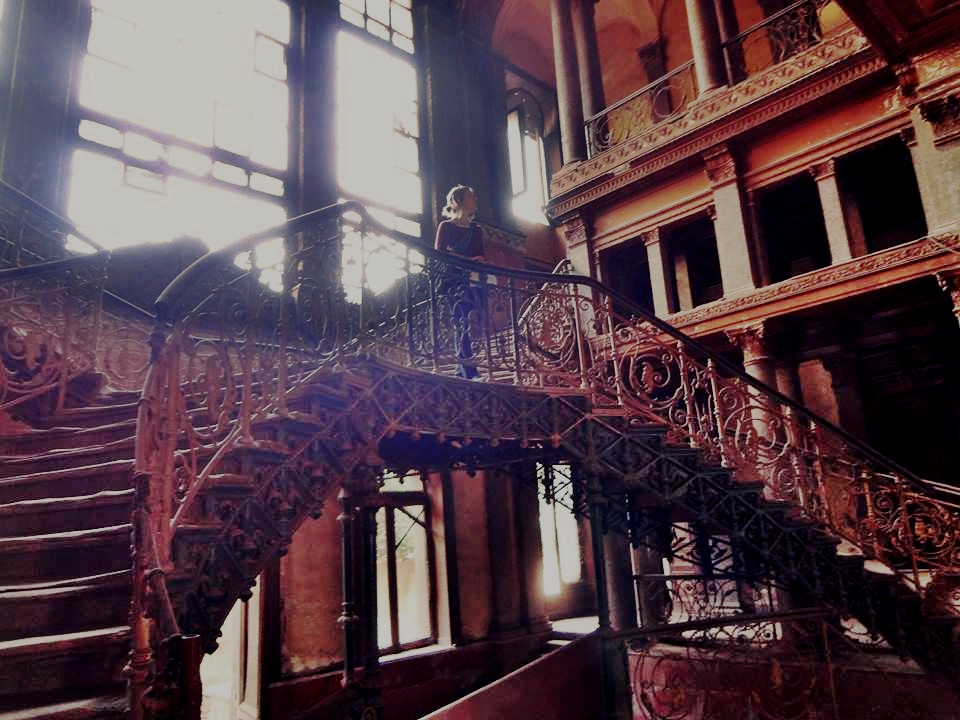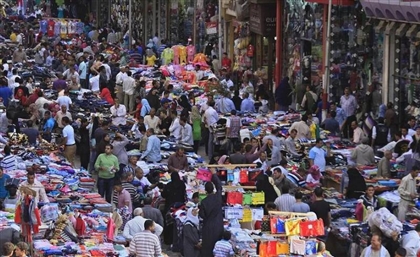Downtown Cairo's Most Mesmerising Secret
On Champollion Street stands an abandoned mansion very few have ever entered. Sina Stieding talks to budding photographer Eva Hösch, one of few who have ever been granted access, and delves into the surprising history of the building...

The busy streets of Downtown Cairo have everything to offer but silence. Having been the stage for a revolution or two has left a mark on the heart of the city. While a lot of corners have become the setting of many events in recent history we often forget the impact the past has had on it.
On a fine day last week Eva Hösch was on a walk through the city when she encountered a house that looked abandoned. Surprisingly, the abandoned house was guarded by a bawab who made sure that the premise could not be accessed. Taking interest in Hösch, the friendly bawab offered to let her sneak a peek of the unique-looking building. Thinking nothing of it, she stepped into the house which immediately turned out to be above such a title. Instead, the "house" is clearly a mansion of historical significance. Baroque architecture, story-high ceilings and magestic staircases only hinted at the history that building had faced. Completely abandoned and covered in dust one room led to another until Hösch completely got lost, each room offering a more stunning sight than the other.

The mansion could only have been a private oasis for someone of very high importance or with a ridiculous amount of cash. Most rooms hosted nothing but dust and beautifully carved wood panels, but some rooms featured black boards, suggesting the premise was once used as a school. But who would have built this breathtaking mansion? Was it a home or a school or something else all together? And what happened to the grandeur of this palace, now nothing but a shadow in a hidden street in downtown Cairo?

The man responsible for this hidden gem is Prince Said Halim Pacha, grandson of Muhammad Ali of Egypt, who resided in Egypt before he was exiled after World War I for his association with the Ottomans. Excited by the glamour and architecture of Rome, the inspiration and materials for the palace originated in Italy and followed the Baroque trend of the time. After the First World War, the palace was confiscated by the British, remaining abandoned before being turned into a boys' secondary school a few years later.

Nasriya School became a high end address for Cairo's male youth, educating many boys that would go on to become Cairo's elite. Decades of hosting teenage boys on a daily basis left its marks on the premise. Once being Halim's private oasis, up to 600 boys and their chaotic behaviour damaged the grandeur of the former blue-blood's stronghold. What used to be Halim's private gardens were replaced by high rise apartment buildings.
Informally known as the Champollion House for its location on Champollion Street, the majestic mansion graced neighbourhood since 1899. Champollion Street wasn't named until after World War I when Jean-François Champollion visited Egypt to decipher the Rosetta Stone, making the mansion wrongfully associated with the Egyptologist. Many have forgotten Said Halim's Palace as talks about restoring the gigantic mansion were often revisited but have borne no fruit to this day. Until the Ministry of Culture approves a full overhaul of the premises which will cost tremendous amounts of time, money and effort it will continue its desolate existence surrounded by silence and darkness in the middle of Downtown.

Thanks to Eva Hösch for sharing the story and her pictures.
- Previous Article 16 Retro Egyptian Celebrity Endorsements
- Next Article Mahmoud Refaat: Bringing Noise
























